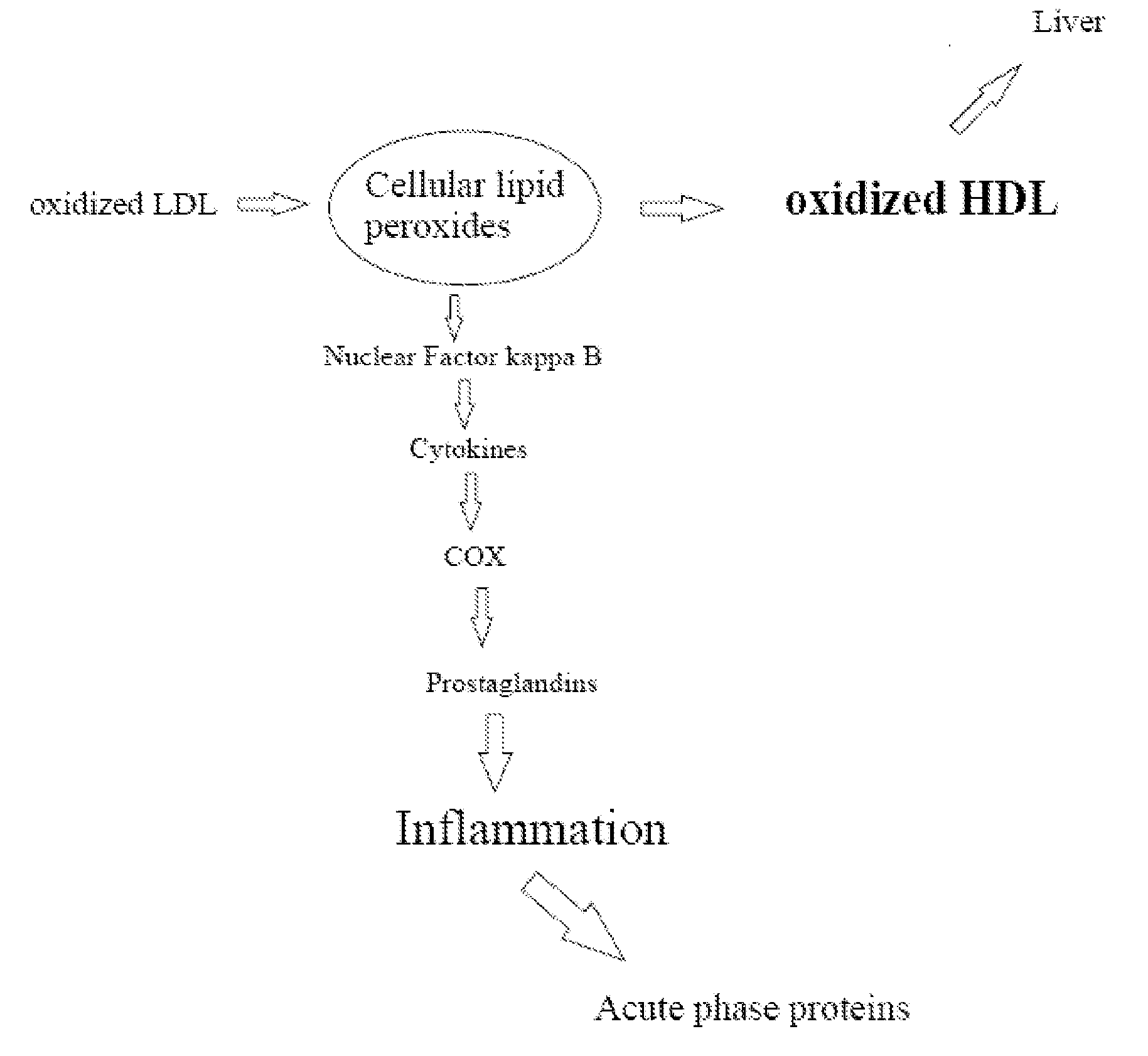Estimation and biological consequences of oxidative metabolism
a technology of oxidative metabolism and biological consequences, which is applied in the direction of instruments, drug compositions, anti-noxious agents, etc., can solve the problems of toxic products of lipid peroxidation, and achieve the effects of strengthening the transport capacity of hdl, enhancing the sequestering capacity of hdl particles, and increasing the concentration of hdl
- Summary
- Abstract
- Description
- Claims
- Application Information
AI Technical Summary
Benefits of technology
Problems solved by technology
Method used
Image
Examples
Embodiment Construction
[0016]Each HDL particle contains phospholipids, cholesteryl esters, triglycerides and free cholesterol, as well as peripheral (apolipoproteins C) and integral (apolipoprotein A) protein moieties. The lipid and apolipoprotein C moieties of HDL are in continuous dynamic change between other lipoprotein particles, peripheral tissues and the liver, while the integral apolipoprotein A remains the same throughout the lifespan of the HDL particle. Measurement of “HDL oxidation” can be based on determination of oxidized HDL lipids or, alternatively, oxidatively modified apolipoprotein A. When the measurement is based on oxidized HDL lipids, it is indicative of the overall lipid peroxide load in the body (indicated by the total amount of lipid peroxides carried by HDL) and, at the same time, of the lipid peroxide transporting capacity of HDL (indicated by the amount of lipid peroxides per HDL particle). On the contrary, quantification of oxidative modifications of apolipoprotein A is indicat...
PUM
 Login to View More
Login to View More Abstract
Description
Claims
Application Information
 Login to View More
Login to View More - R&D
- Intellectual Property
- Life Sciences
- Materials
- Tech Scout
- Unparalleled Data Quality
- Higher Quality Content
- 60% Fewer Hallucinations
Browse by: Latest US Patents, China's latest patents, Technical Efficacy Thesaurus, Application Domain, Technology Topic, Popular Technical Reports.
© 2025 PatSnap. All rights reserved.Legal|Privacy policy|Modern Slavery Act Transparency Statement|Sitemap|About US| Contact US: help@patsnap.com



